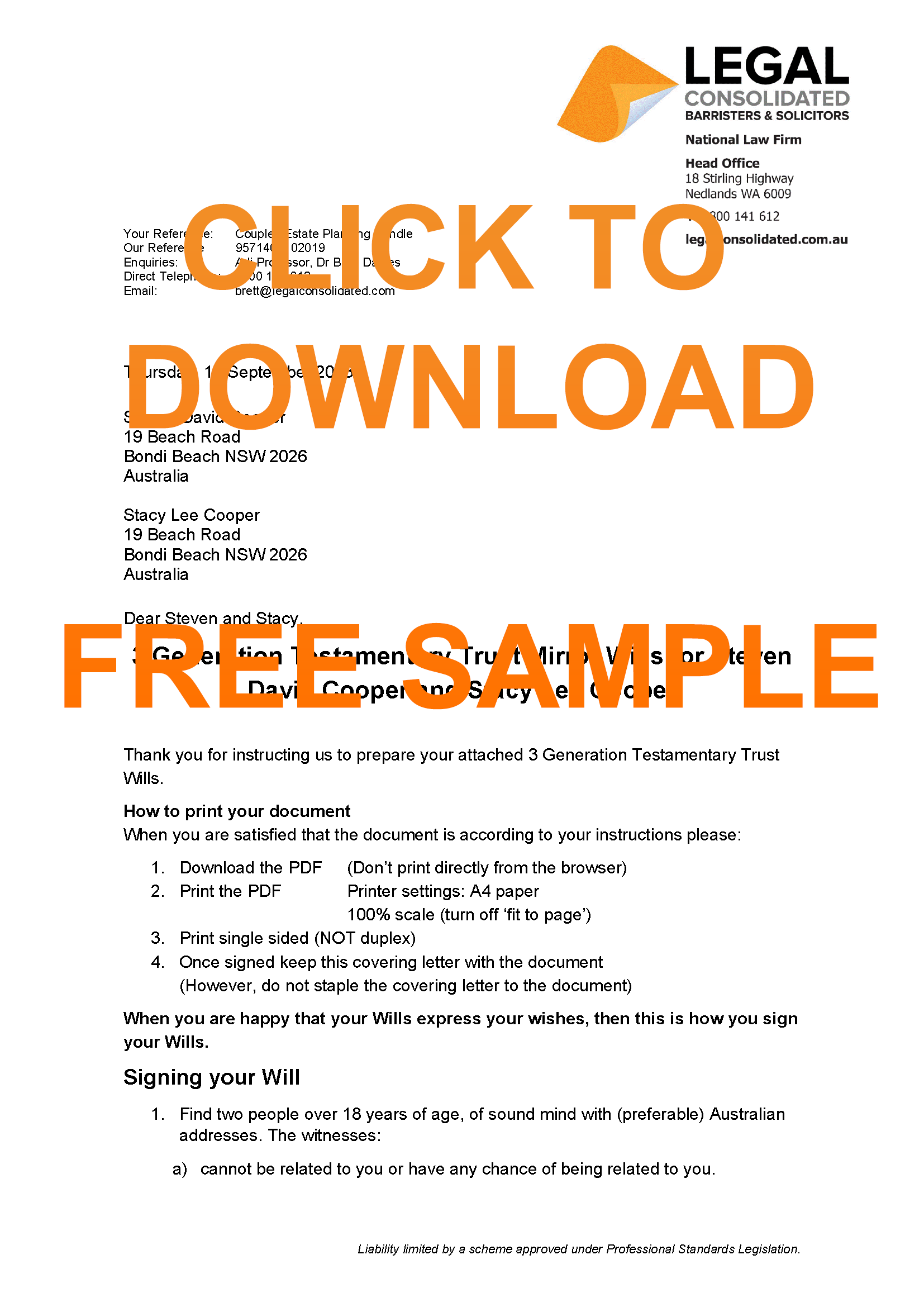Loans ‘expire’ after 6 years – stop your Loan going stale
Loan Agreements usually stop working after 6 years. This is if there have been no repayments during that time.
In Australia, each State and Territory has a Statute of Limitation. Unsecured loans go ‘stale’ or ‘expire’ if no repayments are paid or none are demanded. This is 6 years (3 years in the Northern Territory).
You can restart the 6-year period with a Recognition of Loan Deed. This is also called an
-
Acknowledgement of a Loan
-
Statement of Recognition of a Loan
Each state has its own rules to stop loans from working after 6 years
The limitation periods for each State and Territory for unsecured loans are:
-
Australian Capital Territory: 6 years – Acknowledgement of a Loan
-
New South Wales: 6 years – Acknowledgement of a Loan

-
Queensland: 6 years – Acknowledgement of a Loan
-
South Australia: 6 years – Acknowledgement of a Loan
-
Tasmania: 6 years – Acknowledgement of a Loan
-
Victoria: 6 years – Acknowledgement of a Loan
-
Western Australia: 6 years – Acknowledgement of a Loan
-
Northern Territory: 3 years – Statement of Recognition of a Loan
Does Legal Consolidated’s Acknowledgement of a Loan work in every State?
Yes. We are a national Australian law firm. The Acknowledgement of a Loan Deed is drafted to work in all the above 8 jurisdictions.
A Loan Agreement becomes worthless after 6 years – the Statute of Limitation
For all jurisdictions (except the Northern Territory) a loan agreement is ‘barred’ after 6 years under the Statute of Limitation. Make sure the Borrower signs the Deed of Recognition of a Loan before the 6-year period to start the 6-year period again. Once your Loan goes stale then it stops working.
For the Northern Territory have the Borrower sign the Deed of Recognition of a Loan before the 3-year period to start the 3-year period again.
Acknowledgement of Trust – ‘AFTER the Trustee buys’
What is a “Statute of Limitation” for Loan Agreements?
Statute-barred debts are debts to which a statutory limitation period has expired. Each jurisdiction in Australia has enacted legislation that sets limitation periods for different types of debts and other legal liabilities. Once the debt is statute-barred it is then unenforceable. The Lender can no longer claim back the money from the Borrower.
Brisbane South Regional Health Authority v Taylor
The reason to stop Loan Agreements from working after 6 years is set out by McHugh J in Brisbane South Regional Health Authority v Taylor:
The effect of delay on the quality of justice is no doubt one of the most important influences motivating a legislature to enact limitation periods for commencing actions. But it is not the only one. Courts and commentators have perceived four broad rationales for the enactment of limitation periods.
First, as time goes by, relevant evidence is likely to be lost.
Second, it is oppressive, even “cruel”, to a defendant to allow an action to be brought long after the circumstances which gave rise to it have passed.
Third, people should be able to arrange their affairs and utilise their resources on the basis that claims can no longer be made against them. …
The final rationale for limitation periods is that the public interest requires that disputes be settled as quickly as possible.
Division 7A Loan Deed
There are many types of Loan Agreements to which the Statute of Limitation applies:
- Loan to Children
- Loan to a Company
- Loan from a Company to a human or trust (Division 7A Loan)
- Loan to Parents
- Loan to Spouse
All of them need to be freshened up every 6 years. Otherwise, they risk being statute-barred. This means that you can no longer enforce the debt.
What about pre-Division 7A Loans? Keep the old section 108 loans?
Did your company lend you some money before 1997? Is it still deemed a ‘protected’ section 108 loan by the ATO? Has the Limitation period deemed that the loan is no longer enforceable by the company? If yes, then it may no longer be a Section 108 loan. To protect any old section 108 loans that are still valid and operational then you need to restart the 6-year period via this Acknowledgement of Loan Agreement.
Division 7A started in December 1997. Since then you have not been able to get a Section 108 loan. Pre-December 1997 private company loans (e.g. section 108 loans) might be regarded as forgiven and attract the operation of Division 7A.
Loan to a Company – to prove a loan (escape Debt/Equity rules)
Freshen up a pre-Division 7A Loan?
This Acknowledgement of Debt restarts the Statute of Limitation clock for the old Section 108 loans. This is provided that they are not statute-barred already. It is vital to keep your loan a “complying section 108” loan at all times.
The Statement of Recognition stops the Statute of Limitation from destroying your Section 108 loan. But only if your old section 108 was not statute-barred already.
How to stop the 6-year Statute of Limitation from applying to a Division 7A Deed?
Yes. A Division 7A Loan is an ‘at call loan’. And expires at 6 years. But with ‘dovetailing‘ you can print a Legal Consolidated Div 7A Loan out, again, for free.
When does the limitation period start for Loan Agreements?
When does the 6-year period start for a Loan Agreement? Time starts to run from the date on which the right of action starts. While it is not always straightforward, a right of action usually starts when a debt becomes due. This is either because:
- the Loan Agreement requires payment by that date; or
- the debtor defaults on regular instalment payment obligations set out in Loan Agreement.
The date on which a right of action accrues is unaffected by the existence of procedural limitations on the exercise of that right. For example, the requirement under the Consumer Credit Code that a section 80 default notice be provided and that the 30-day period of the notice has expired without the default having been remedied before the creditor can begin enforcement action, does not alter the fact that the right of action has accrued on the date of default: Equuscorp Pty Ltd v Rigert & Anor [2003] VSC 343.
How to restart the limitation period? How to ‘freshen up’ the Loan Agreement?
The 6-year period may be restarted if the Borrower acknowledges the debt in writing. This is called a Deed of Recognition of a Loan.
Deed of Recognition of a Loan
The Deed of Recognition of a Loan gives the right of action:
‘a notional birthday and on that day, like the phoenix of fable, it rises again in renewed youth—and also like the phoenix, it is still itself’.
Busch v Stevens [1963] 1 QB 1, Lawton J at 6
A Deed of Acknowledgement of a Loan requires 3 things
To reset the clock, the Deed of Recognition of Loan is:
- made by the Borrower (or a properly authorised agent of the Borrower)
- in written and signed; and
- states a clear acknowledgement that the debt exists and is unpaid.
Whether a document constitutes sufficient acknowledgment of the debt to restart time is decided on a case-by-case basis. This is why it is better to build a Legal Consolidated Deed of Recognition of a Loan.
Best witnesses to the Deed of Recognition of an old Loan Agreement?
The witnesses to the Deed of Recognition of a Loan are:
- not involved in the transaction in any way
- not related to any of the parties (no spouses or relations)
- over the age of 18 years
- of sound mind
The best person to use as a witness is a ‘stranger’, someone like a neighbour, accountant or financial planner.
Does the Deed of Recognition of a Loan fix up other problems with the Loan?
The Deed of Recognition of a Loan only restarts the Statute of Limitation period. It stops your loan from expiring under the Statute of Limitation. If the 6-year period has already passed this document does not work.
If your loan has problems, is faulty or there are other issues then you need to have the Loan professionally reviewed.
Help to build a Deed to restart the 6-year loan period
You are building a Recognition of a Loan on a law firm’s website. Telephone us for legal advice. However, before you telephone us, start the Free Building process first. The building process is educational. And has additional hints to help you answer the questions.
The 4 most common Business Structures in Australia
1. Family trust
- Family Trust Deed – watch the free training course (there are nearly 1 million Family Trusts in Australia)
- Family Trust Updatesm – family trust deeds are like your car they need to be serviced every 5 to 7 years:
- Everything – Appointor, Trustee & Deed Update
- Deed ONLY – only update the Deed for tax
- Guardian and Appointor – only update the Guardian & Appointor – succession planning
- Change the Trustee – change human Trustees and Company Trustees
- The company as Trustee of Family Trust – only for assets protection?
- Bucket Company for Family Trust – tax advantages of a corporate beneficiary
2. Unit trust
- Unit Trust – where are Family Trust is for one family, a Unit Trust works for 2 or more different family groups
- Unit Trust Vesting Deed – wind up your Unit Trust
- Change Unit Trust Trustee – replace the trustee of your Unit Trust
- Company as Trustee of Unit Trust – how to build a company designed to be a trustee of a Unit Trust
3. Corporate structures
- Incorporate an Australian Company – best practice with the Constitution
- Upgrade the old Company Constitution – this is why
- Replace lost Company Constitution – about to get an ATO Audit?
- Partnership Agreement – but what about joint liability?
4. Service trust and Independent Contractors Agreements
- Independent Contractor Agreement – make sure the person is NOT an employee
- Service Trust Agreement – operate a second business to move income and wealth
- Law firm Service Trust Agreement – how a law firm runs the backend of its practice
- Medical Doctor Service Trust Agreement – complies with all State rules, including New South Wales
- Dentist Service Trust Agreement – how dentists move income to their family
- Engineering Service Trust Agreement – commonly engineers set up the wrong structure
- Accountants Service Trust Agreement – complies with ATO’s new view on the Phillips case

